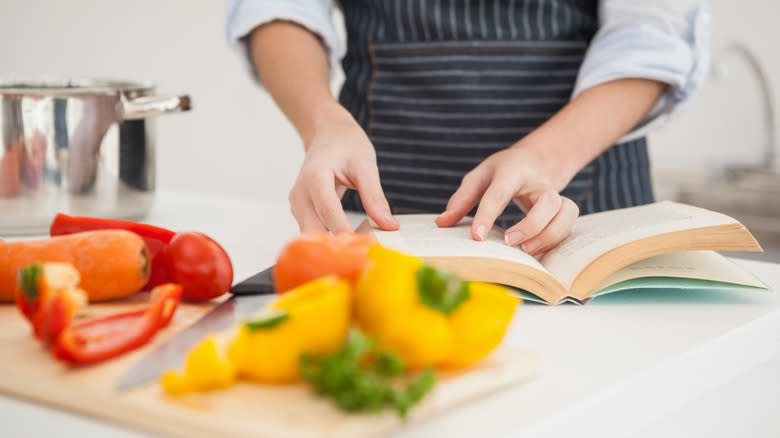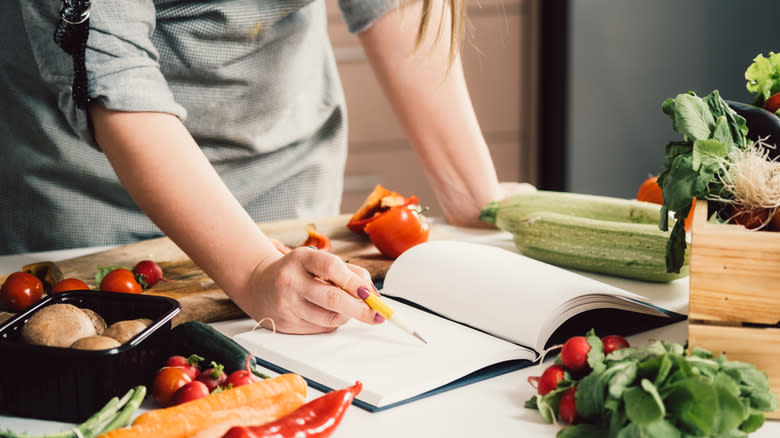The Extra Step You Should Always Take When Scaling Down A Recipe

Whether it's your great-great grandmother's famous pecan pie or a viral pasta dish you saw on TikTok, following recipes is a great way to try out new dishes or learn how to perfect old ones. Knowing how much of each ingredient the recipe calls for is a life-saver when shopping, prepping, and preparing your food. But not all recipes are crafted with you in mind. Although cooking directions are handy and helpful, you can break the rules a little bit when you are cooking for fewer people than the recipe calls for.
When you want to make cookies for only two people but the recipe makes three dozen, you might want to scale down the amount of each ingredient to fit your needs. Learning how to convert a recipe can take a bit of time, concentration, and more math than we are usually willing to do at our kitchen counter. If you try to keep all of that work in your head, you could give yourself a headache. Instead, write out each converted recipe with the scaled-down amount next to each ingredient. Writing down a converted recipe will prevent you from having to redo the work when you want to make the recipe again, but again want to make less of the food than the original recipe calls for.
Read more: The Best Kitchen Gadgets You Can Buy
Convert The Recipe Then Write It Down

When you alter a recipe, it is best to have exact measurements rather than trying to scale down each ingredient off the top of your head. This is especially true for baking,when correct ratios are crucial to achieving the desired result. To convert ingredient amounts, you can kick it old school with some simple math, or you can utilize various recipe scale conversion calculators found on the internet, which can help you convert your recipe by scale or by portions.
Scaling a recipe means either halving or doubling the ingredients. You can also convert based on portion. For example, if the original recipe makes five servings, but you are cooking for a party of two, converting by portion can provide more accurate results than trying to find a correct fraction. If you want to scale down the recipe without a calculator, following a conversion chart can also be a handy reference. Since imperial measurements and metric measurements are different amounts, you'll need a conversion chart that can convert the measurements used in your recipe.
After scaling down your recipe, jot it down. You can write it out with a pen and paper, type a note on your phone, or record it in a fancy recipe app. The important thing is to make and keep written record of the converted recipe, so you don't have to add "redo math" to your prep work the next time you make the dish.
Read the original article on The Daily Meal

